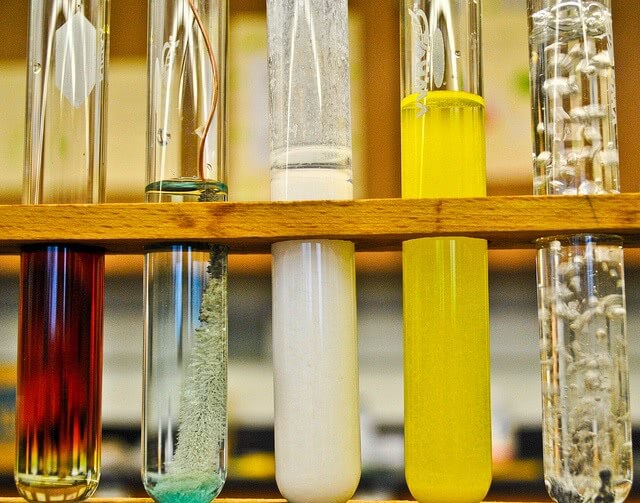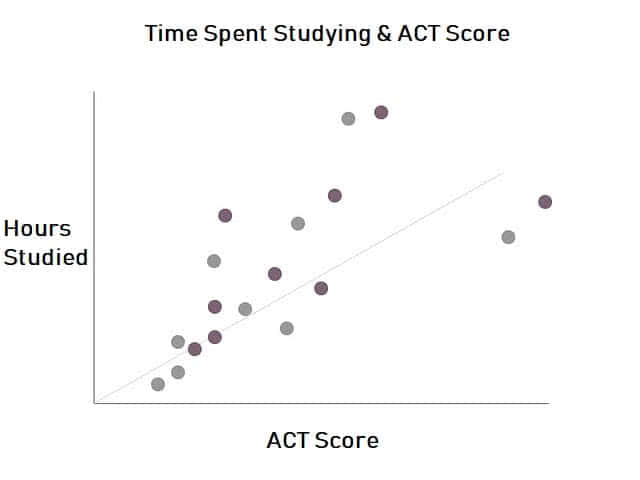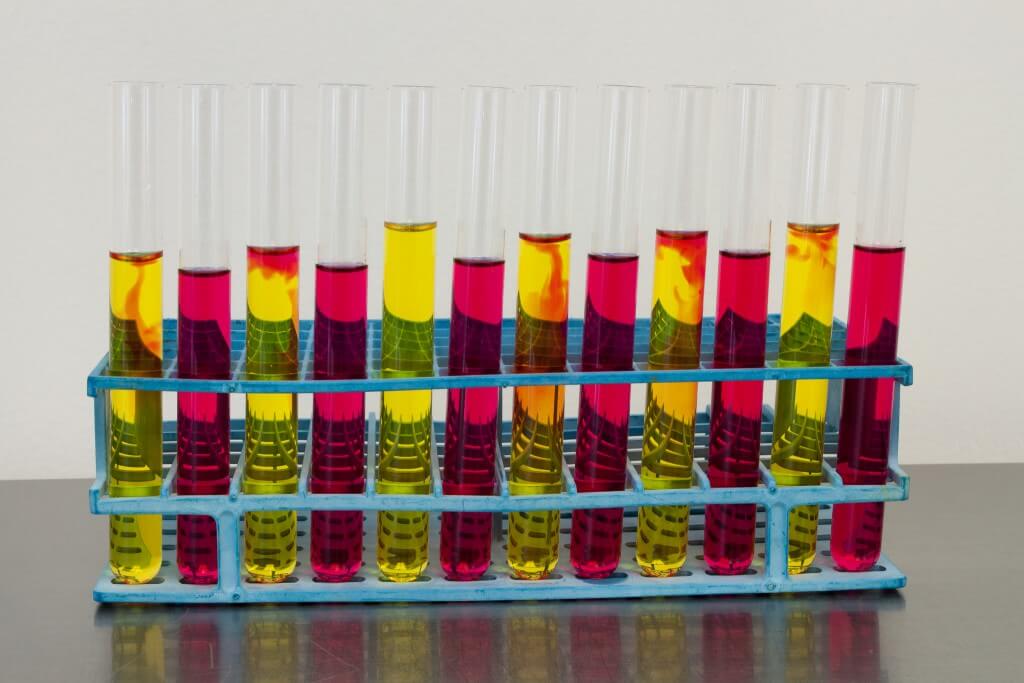
Source: Flickr user 87007001@N04 .
Composed of 40 questions, the ACT science section gives students 35 minutes to complete it. Three types of questions make up the 40 questions: Data Representation, Research Summaries, and Conflicting Viewpoints. For each type, students receive a short passage containing all the necessary information to answer the questions. Passages may be descriptions of experiments, graphs, and charts, or a combination of any of these things. Below is our ACT science section guide!
ACT Science Section Breakdown
There are a total of 7 passages with 5-7 questions on each passage.
- Data Representation
- 3 passages, 5-6 questions per passage
- Research Summaries
- 3 Passages, 5-6 questions per passage
- Conflicting Viewpoints
- 1 Passage, 7 questions per passage
Data Representation (30-40% of the exam)
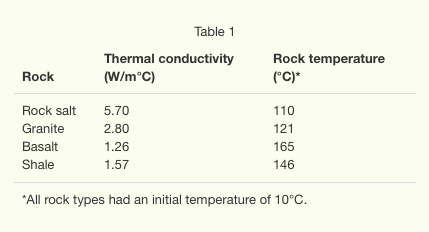
http://www.actstudent.org/sampletest/science/sci_04.html
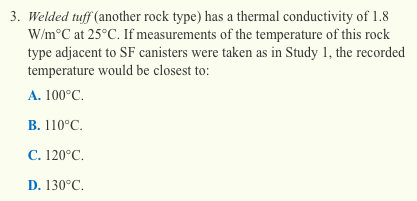
http://www.actstudent.org/sampletest/science/sci_04.html
This type of question focuses on your ability to read and interpret graphs, scatterplots, and tables.
For questions of this nature, you receive information in one or more of these formats along with a small amount of background information. Read the passage thoroughly, then answer each of the questions based on the informing you just read.
The question to the right is taken from a practice test on ACT’s free student test prep website. By interpreting the information in the table, the student should then be able to extrapolate that the correct answer is D, 130 degrees Celsius. This can be easily explained–since the granite has a thermal conductivity of 2.8 at 121 degrees Celsius, and the shale has a thermal conductivity of 1.57 at 146 degrees Celsius, the welded tuff falls between the two with a thermal conductivity of 1.8, which means that the temperature would also fall between the two. Thus, D, is the only option that fits the criteria.
Research Summaries (45-55% of the exam)
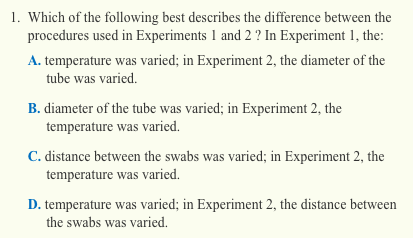
http://www.actstudent.org/sampletest/science/sci_02.html
Research summaries are questions that focus on the experiment design and interpretation of results.
For these questions, you receive a passage describing an experiment or two. The test asks you to identify different parts of the experiment, as well as identify any errors, and interpret the results.
Many of these questions have to do with the scientific method, so read the passage thoroughly and refer back to it while answering the questions.
Conflicting Viewpoints (15-20% of the exam)
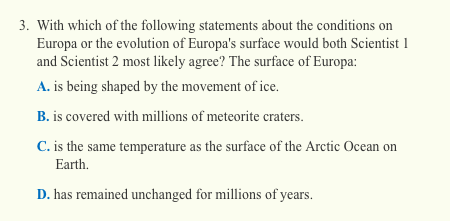
http://www.actstudent.org/sampletest/science/sci_01.html
Much like questions covering research summaries, the questions on conflicting viewpoints will focus on the results of an experiment, or the interpretation of results. The difference comes from the fact that you get interpretation of results rather than interpreting it itself.
As with each other science question, you get a passage to read. Passages on conflicting viewpoints generally give a bit of background and then interpretations, hypothesis, or theories from two different scientists. The questions, like the one above, will test your understanding, but also your ability to analyze, and differentiate between the two viewpoints.
Key Terms to Know for the ACT Science Section
Hypothesis – A question or idea tested in a scientific experiment.
Variable – One part of an experiment altered to see how it affects the outcome.
Control – A version of an experiment where the variable you are attempting to test stays the same in order to prove that changing that variable is what leads to the change of outcome.
Correlation – When two variables seem to change in relationship to one another. e.g., as X increases, Y also increases. It’s important to remember that many variables may correlate. But, that does not necessarily mean that they cause one another to change–there may be another variable that causes both of them to move independent of one another.
Causation – When a change in one variable is proven or shown to cause a change in another variable. This goes beyond correlation and has been proven, through a scientific experiment, to actually be a cause for the change observed in an experiment.
Key Concepts to Know for the ACT Science Section
Experiment design – This refers to the specific steps and circumstances under which an experiment takes place. It’s important to know that well-designed experiments need to isolate single, specific variables for individual testing. If multiple variables change throughout each test, then it’s impossible to prove which caused the end result.
Direct relationship – Data with a direct relationship move in the same direction. For example, if you increase Y, X also increases. If you decrease Y, X also decreases.
Inverse relationship – This is the opposite of a direct relationship. Two variables that, while correlated, move in opposite directions. As Y increases, X decreases, for example.
Interested in seeing how your ACT/SAT scores affect your admission odds? Check out College Raptor’s free match tool today!

